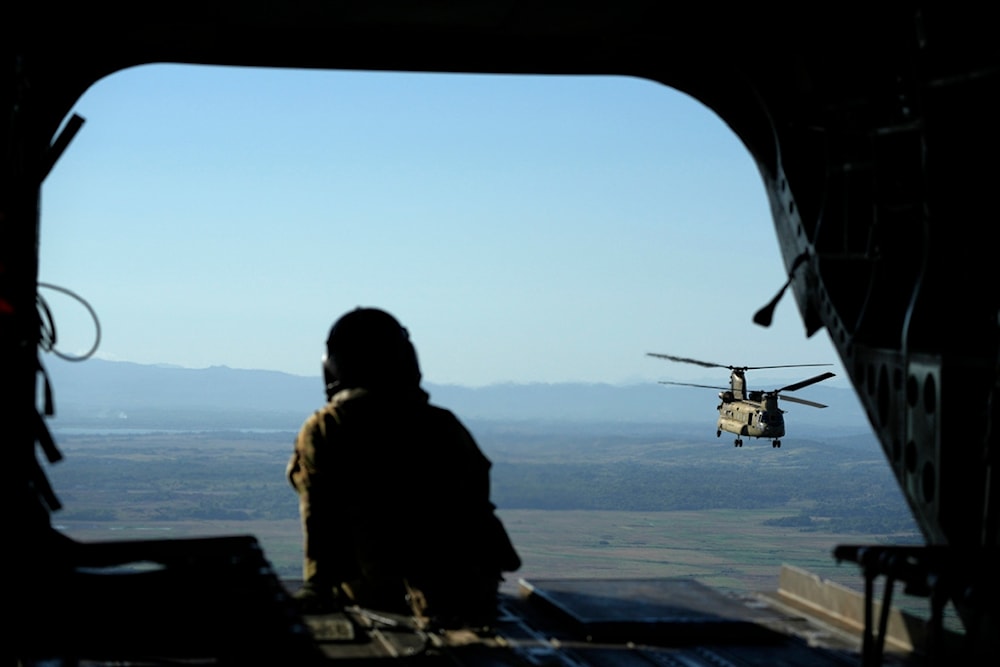US to withdraw mid-range missile system from Philippines
The presence of the mid-range missile system in the Philippines had provoked anger from China.
-

A US Army CH-47 helicopter flies over Cagayan province, northern Philippines, during a joint military exercise on Monday, May 6, 2024. (AP)
A US mid-range missile system deployed in the Philippines for annual joint military exercises will be withdrawn from the country, a spokesperson for the Philippine Army announced Thursday.
In April, the US Army deployed the Mid-Range Capability missile system, which can launch the Standard Missile 6 (SM-6) and the Tomahawk Land Attack Missile, in the northern Philippines.
Philippine troops received training on the use and maintenance of the Typhon missile system, although it was not utilized in live-fire exercises, Colonel Louie Dema-ala told AFP.
"As per plan... it will be shipped out of the country in September or even earlier," Dema-ala said, adding that "the US Army is currently shipping out their equipment that we used during Balikatan and Salaknib (exercises)."
The presence of the mid-range missile system in the Philippines had provoked anger from China.
In June, Chinese Defense Minister Dong Jun cautioned that there were "limits" to Beijing's restraint regarding the South China Sea and the deployment of ballistic missiles in the Asia-Pacific region.
The deployment of "medium-range ballistic missiles" was "severely damaging regional security and stability," Dong warned.
"Acting in this way will ultimately burn oneself."
His comments at a security forum in Singapore clearly alluded to the Philippines and the United States, who have been strengthening defense ties.
In an attempt to counter Chinese influence, the United States has been reinforcing alliances with countries in the Asia-Pacific region, including the Philippines.
Washington and Manila are treaty allies and have deepened their defense cooperation since Philippine President Ferdinand Marcos took office in 2022.
The Philippines' proximity to the South China Sea and Taiwan makes it a key partner for the United States in the event of a confrontation with China.
Read more: Philippines buys 5 vessels from Japan as South China Sea tensions rise

 2 Min Read
2 Min Read








